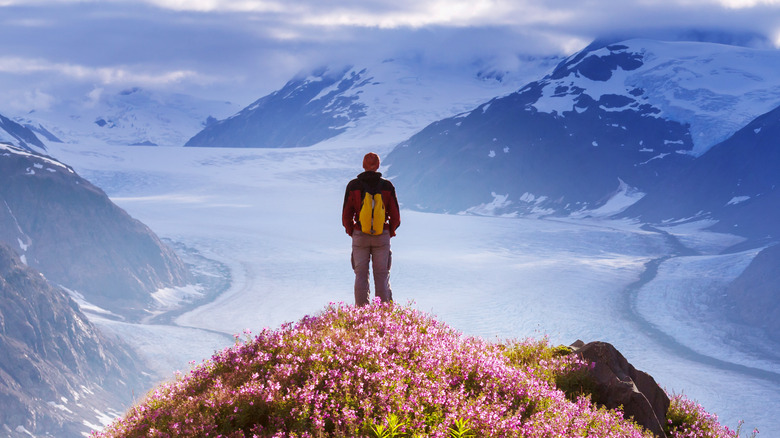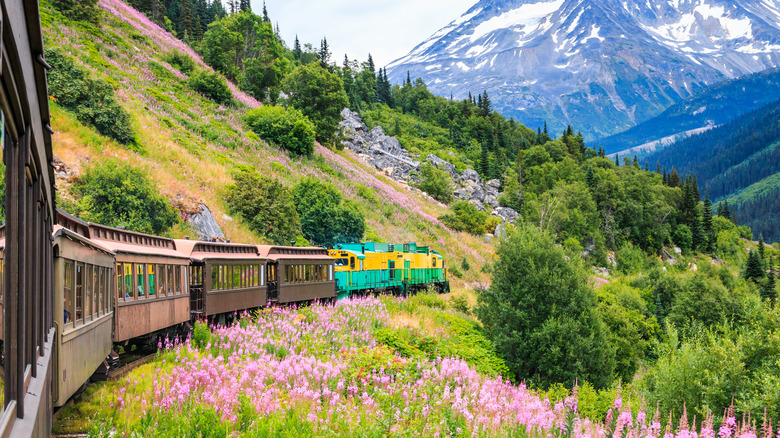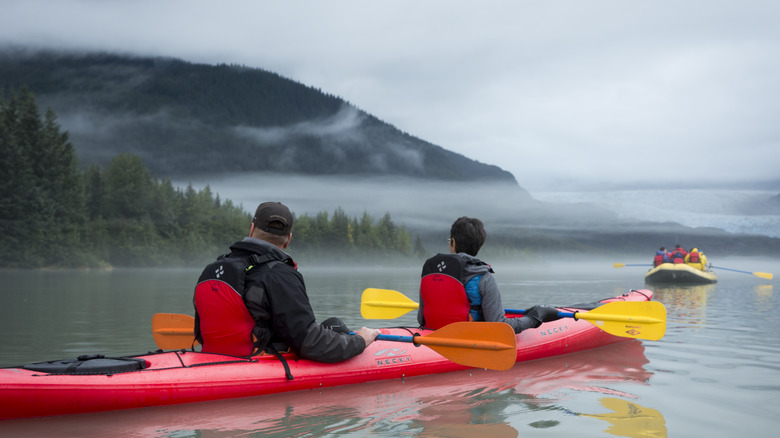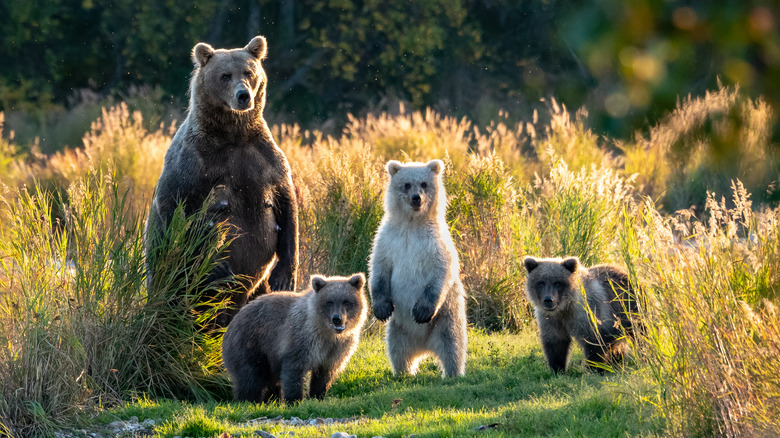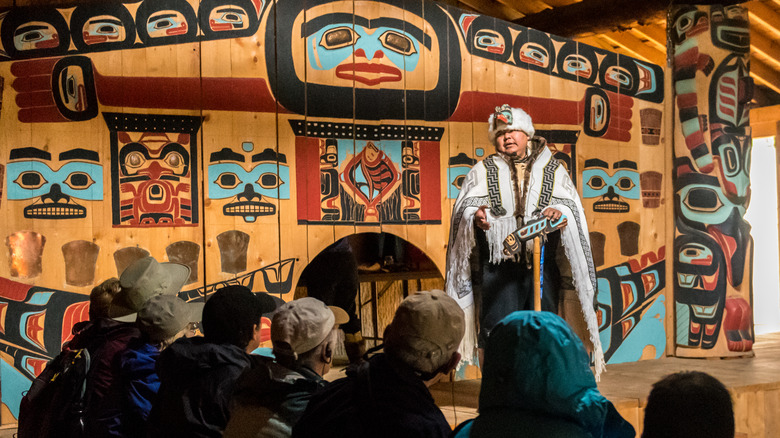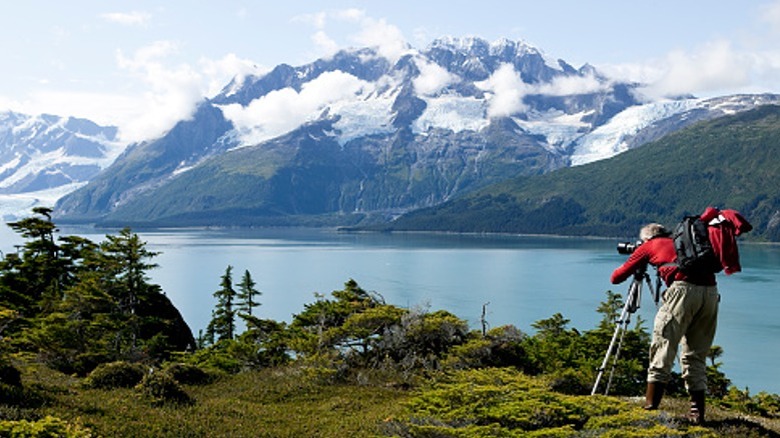Why You Should Consider Visiting Alaska During High Tourist Season
You've heard the common advice about skipping the high season when visiting a popular destination, but you might want to pass on that recommendation for Alaska. There's a reason why many people decide to travel during its primary tourist season. With spectacular landscapes, opportunities for adventure, and captivating culture, the Last Frontier beckons travelers to come wandering from mid-May to mid-September. This period encompasses the Alaskan summer season, and its distinct sights and activities offer a delightful break from whatever you're leaving back home.
The thawing of snow kickstarts May and signals the beginning of milder temperatures. Longer days also jumpstart a bevy of activities that Alaskans and tourists alike dive into to avoid the feeling of "sun guilt" caused by staying indoors amid good weather. Nature itself is abuzz as it gets busy changing from snowy white to its colorful hues. Here are the reasons why you'll agree with your Tlingit guide: "Yak'éi haat yigoodée." (Translation: "It's good that you have come here.")
Comfy temperature for eager explorers
After months of harsh winter, the sun graces the Alaskan skies once again. With it comes milder weather — the perfect backdrop for exploring the 49th state's wide open spaces. But first, you'll see breakup: puddles of mud from the thawing of snow. But with stunning scenery and many outdoor activities waiting for you, would you mind it a lot?
Then it gets drier — with May being the driest time — before it gets wetter toward the end of the summer season. Alaska's warmest weather is in June, July, and August, with temperatures ranging from 55 to 70 degrees Fahrenheit in the summer. However, expect variations depending on which part of the state you're heading. Up north in the Alaskan Arctic, prepare for daytime temperatures of 40 degrees Fahrenheit. In the south, where most of the popular tourist spots are located, temperatures are milder and more pleasant.
The Alaskan summertime temperature is perfect for exploring towering mountains, coastal fjords, and massive glaciers. With eight national parks, nearly 22 million acres of national forest, 16 national wildlife refuges, and over 150 state parks, you won't likely run out of places to check out. And, with the Alaska Highway and the Alaska Railroad, you don't even need to step outside to see Alaska's natural wonders.
Longer days for outdoor experiences
Summer in Alaska means long days. In fact, according to The Weather Channel, Alaskans bask in the sun all day for about two months a year. Alaska's state website tells us that in the northernmost village of Barrow, it's practically daytime all the time for 84 days. The rest of Alaska either has late sunsets or nights that look like it's twilight. But thanks to these longer days, you can do so much more under the light of the Midnight Sun.
Per the state website, you can hike trails near Anchorage in May, the mountains in early June, and the Arctic by the end of June. For breathtaking scenery, trek the classic Goat Trail in Wrangells. Go backpacking in the Twin Lakes/Turquoise High Route, Gates of the Arctic, or Kesugi Ridge for solitude amid panoramic views. Or, hike to Root Glacier for its cool ice canyons, pools, and moulins. Climb the roughly 20,000-foot Mount Denali — preferably with a guide — for a bird's-eye view of the Alaskan wilderness stretching hundreds of miles below. Or, take it easy with a hike, cycling, birdwatching, or stargazing from your campfire at Denali National Park.
If you're at home in the water, paddle through Arctic rivers, kayak Aialik Bay or Harriman Fjord for glacier views all around, or raft at Denali. Join a small cruise to discover Prince William Sound's 150 glaciers or Glacier Bay's wilderness sanctuary. Or, visit Ketchikan, "the salmon capital of the world," to catch, well, salmon — along with herring, Pacific cod, and other fish.
Summertime wildlife sightings
It's not just the residents and tourists who are out and about in Alaska during the summer. It's also the best time to see many of the state's animal residents too. Depending on what creatures you'd like to see, schedule your visit with the optimal time to view them according to the information from the state's Department of Fish and Game.
Many baby animals, from deer fawns to moose calves to the fur seal pups in Pribilof Islands, are born in summer. Bears that have woken up from their hibernation — and their cubs — congregate in the streams and rivers from July to November to catch salmon which swim upstream to spawn. Meanwhile, September sees the beginning of mating season for caribou and moose; muskoxen rut earlier in July.
Seabirds and migratory songbirds arrive in May, but June is the best time to see Asian accidentals and other unique bird species. July is when the colonies are at their peak, but you can catch sight of bald eagles and loons in August. In July, you'll also see walrus residents of King Islands, Little Diomede, and Round come out of hiding. To spy out belugas, humpbacks, and orcas, join a summer cruise. Inland, hop on a Denali bus tour for wildlife viewing, though you can bring your own vehicle too. Don't forget to bring mosquito repellant.
Alaskan festivals galore
Towns and cities come alive in the summer as tour operators, cruises, hotels, and other businesses wake from their winter hibernation. Basically, nearly everything is open at this time, providing travelers with many accommodation and dining options. This is also the season when most of the state's biggest events are held.
Foremost among these is the Midnight Sun Festival. It's held on the Saturday before the summer solstice in the streets of downtown Fairbanks. Lasting for 12 hours, it features family-friendly activities, including BBQ, gold panning, live music, and performances. On June 21, the summer solstice is celebrated in Anchorage with music and dancing. The Alaska State Fair is a month-long event that starts from the latter part of August to early September. It features rollercoasters, open-air shows, and berry-filled food and drink. Meanwhile, the 4th of July is celebrated with equal amounts of enthusiasm across the state.
If you'd like to learn more about the Indigenous people of Alaska, visit Juneau in June when the biennial Celebration takes place. This four-day event features Tsimshian, Haida, and Tlingit people in traditional garb. This huge celebration of native Alaskan culture features traditional songs and dances, storytelling, a canoe welcome, a fashion show, arts and crafts, and Indigenous food. In July, the World Eskimo-Indian Olympics is held in Fairbanks as a celebration of Indigenous people and the survival and athletic skills they value.
Abundant photo ops
Of course, a trip to Alaska wouldn't be complete without the mandatory photos, and with Instagram-worthy vistas everywhere, they're fairly easy to get. In fact, your dilemma might be a unique one: what to capture and where. With more than half a million square miles equivalent to one-fifth of the contiguous United States, Alaska's vast territory offers numerous opportunities for photography.
For amateur photographers, try joining a photo safari, where you visit several picturesque places within several days. The safari will cover all bases, from wildlife to landscapes. You could also book a flightseeing tour or a guided air taxi to view the Alaskan wilderness from above. There are even helicopter tours of Denali. But, opt for the land route if you want to capture both the landscape and the wildlife. If bears are on your mind, Katmai National Park and Tongass National Forest should keep you busy. Or, if you're more into the Indigenous culture or just desire solitude, Sitka Totem Park features ornate totems with views of the mountains. And, of course, head to Fairbanks in September to start your journey toward getting the perfect northern lights photo.
But, remember: Alaska is huge and the places we've covered here represent just a tiny fraction of what's in store for you when you explore beyond them. So, take your camera and plenty of storage space and start clicking.
